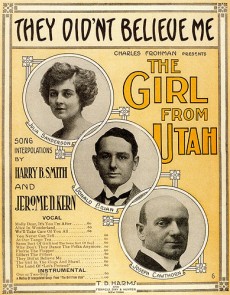
From Broadway To 52nd Street
The Girl From Utah, a British import to Broadway, opened at the Knickerbocker Theater on August 24, 1914 and ran for 120 performances. J. A. E. Malone directed this musical that starred Julia Sanderson, Donald Brian, Joseph Cawthorn, Queenie Vassar and Venita Fitzhugh. Composer Jerome Kern was asked to give it an American flavor and along with lyricist Herbert Reynolds they composed “They Didn’t Believe Me”. History contends that this was Kern’s career-making opportunity to express himself and this musical would hint at the emerging American style of musical comedy.
The Story: In London, an American girl named Una is pursued across the Atlantic Ocean to London by a Mormon but is saved from a bigamous marriage when she falls in love with a handsome hoofer.
Broadway History: It was during 19th century that the development of not only the American theatre took place throughout the country but the all powerful “Syndicate” – the cartel of theatre owners who joined forces under the influence of one of Broadway’s early great producers, Abraham Lincoln Erlanger. One of the great stars of theatre in the early twentieth century was George M. Cohan. Rising through the ranks of vaudeville from a child star to adulthood, he flaunted his patriotism not for those born in America but those immigrating to this great country to become citizens and patriots. Cohan epitomized the sense of the country by self-proclaiming himself as a real live nephew of Uncle Sam.
Sponsored By
www.whatissuitetabu.com
More Posts: broadway
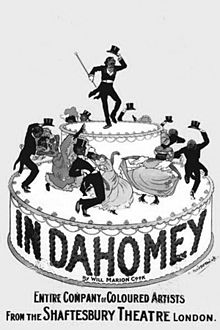
From Broadway To 52nd Street
In Dahomey opened on February 18, 1903 at the New York Theater and ran for 53 performances, then considered a successful run. It was a landmark American musical comedy, in that it was “the first full-length musical written and played by blacks significantly marked the first full-length Black to be staged in an indoors venue at a major Broadway house and the first black musical to have its score published, albeit in England. As one of the most successful musical comedies of its era, it propelled composer Will Marion Cook, lyricist Paul Lawrence Dunbar and leading performers Bert Williams, James Smith and George Sisay to become household names. It was “the first African American show that synthesized successfully the various genres of American musical theatre popular at the beginning of the twentieth century—minstrelsy, vaudeville, comic opera and musical comedy.
Though a jazz standard did not emanate from this musical either, the In Dahomey poster features the famous “cake walk” with the character portrayed by Bert Williams and prompted Percy Grainger to write a highly virtuosic concert “rag” titled In Dahomey (Cakewalk Smasher), that he completed in 1909.
The Story: A tale of a group of Blacks, who, having found a pot of gold, move to Africa and become rulers of Dahomey (present-day Benin).
Broadway History: One of the most influential sources of the American musical was one of its most shameful. The minstrel show got its start in the early nineteenth century when a number of white entertainers, mostly of Irish descent, found they could connect with their more raucous audiences by applying burnt cork to their skin and caricaturing black people in various songs, dances and skits. However, the portrayals by white entertainers created a dialogue that became very fashionable, even though they perpetuated negative stereotypes. Black entertainers knew they didn’t speak like that and formed a troupe, and out of that came comic duos on Broadway like Flournoy Miller and Aubrey Lyles in the 20’s, William Gaxton and Victor Moore in the 30’s. But one man transcended minstrelsy’s denigration of his race and became not only the most popular comedian of his day, but the most famous African American since Frederick Douglass. He was Bert Williams, who denied entrance into Stanford University, worked as a banjo player in saloons and minstrels until he teamed up with George Walker. The team gained fame, which led them to head the cast of “In Dahomey” in 1903, the first full-length musical written and played by blacks performed at a major Broadway house.
Sponsored By
www.whatissuitetabu.com
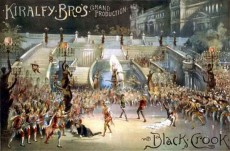
From Broadway To 52nd Street
Though no jazz standards came out of the musical, The Black Crook took the stage on September 12, 1866 and shocked, outraged and totally delighted American audiences. It was the first long running musical hit with a record 475 performances. Though often at odds with the Puritan morality that underwrote the founding of this nation, a new totally American art form, the Broadway musical, was born.
The Story: Set in 1600 in the Harz Mountains of Germany where evil, wealthy Count Wolfenstein seeks to marry the lovely village girl, Amina. With the help of Amina’s scheming foster mother Barbara, the Count arranges for Amina’s fiancé, Rodolphe, an impoverished artist, to fall into the hands of Hertzog, an ancient, crook-backed master of black magic. Hertzog has made a pact with the Devil (Zamiel, “The Arch Fiend”): he can live forever if he provides Zamiel with a fresh soul every New Year’s Eve. As Rodolphe is led to this horrible fate, he escapes, discovers a buried treasure, and saves a dove. The dove magically turns out to be Stalacta, Fairy Queen of the Golden Realm, who is pretending to be a bird. The grateful Queen rescues Rodolphe by bringing him to fairyland and then reuniting him with his beloved Amina. The Count is defeated, demons drag the evil Hertzog into hell, and Rodolphe and Amina live happily ever after.
Broadway History: The bastion of artistic collaboration, Broadway is the quintessential stage experience that marks the pinnacle of excellence between writer, composer, lyricist, director, choreographer, dancer and actor; thus very often creating a magical event that astonishes, amazes and delights the patron. Synonymously, 52nd Street was the mecca for interpretation of a new genre of music that emanated from the souls of black folks. It was jazz and the district symbolized greatness and brought together the creativity and individual voice of the masters with those who aspired to gain membership into this elite society of players.
Broadway and 52nd Street, where the avant-garde and art starved minions of high-society went to be entertained, are not only streets. They evolved into contractual classifications, industries, traditions and states of mind. They both became adventures into the depth of bawdiness, art and culture. A theatre or nightclub – devoid of clientele – was home to gypsies or musicians who practiced and rehearsed for hours, weeks, months and even years for that one opening night of lights where a star was often born. Whether the musical review lauded the performance or bespoke the incredulity of its author and/or performers, a select few songs garnered perpetual encores by living on in the voice of the jazz musician or vocalist who recognized the beauty of the melody that helped moved the musical story.
The Broadway musical is purely an American art form. While many consider 1927’s Showboat as the first great book musical, the use of drama, dance and music in one production all happened quite by accident and over sixty years earlier. In 1866, a Parisian ballet troupe was imported to perform at the Academy of Music. The theatre burned to the ground before the show could be staged, stranding the performers and financially draining the show’s producers. They, in turn, went to another impresario, William Wheatley – the manager of Niblo’s Garden, located on Broadway near Prince Street – who was preparing a melodrama called “The Black Crook”. Wheatley decided to turn The Black Crook into a musical extravaganza and for the first time ever on September 12th, audiences saw a drama, were entertained by an orchestra and saw a hundred gypsies kicking up their heels.
Sponsored By
www.whatissuitetabu.com
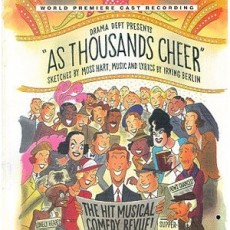
From Broadway To 52nd Street
In just three days, on Saturday, September 1, 2012, Notorious Jazz presents its latest documentary series – “From Broadway To 52nd Street” – the history of the compositions written for the musical stages of Broadway that have become jazz standards.
You’ll get historical insight into the era, the composers, the play, the lyricists, the streets, theatres, clubs and the people who made the songs famous on both performance stages. To the present day, the music continues to celebrate perpetual encores through the interpretive talents of great jazz musicians and vocalists.
So join Notorious Jazz on Saturday, September 1st as we present the first installment, and then each successive Saturday for a new series element to the history of this timeless music.
Sponsored By
www.whatissuitetabu.com
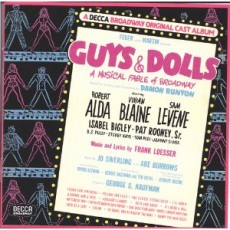
From Broadway To 52nd Street
Beginning Saturday, September 1, 2012, Notorious Jazz will present its latest documentary – “From Broadway To 52nd Street” – the history of the compositions written for the musical stages of Broadway that have become jazz standards.
You’ll get historical insight into the era, the composers, the play, the lyricists, the streets, theatres, clubs and the people who made the songs famous on both performance stages. To the present day, the music continues to celebrate perpetual encores through the interpretive talents of great jazz musicians and vocalists.
So join Notorious Jazz on Saturday, September 1st as we present the first installment, and then each successive Saturday for a new series element to the history of this timeless music.
Sponsored By
www.whatissuitetabu.com
More Posts: broadway,dance,history,jazz,musical,play,song,vocal


